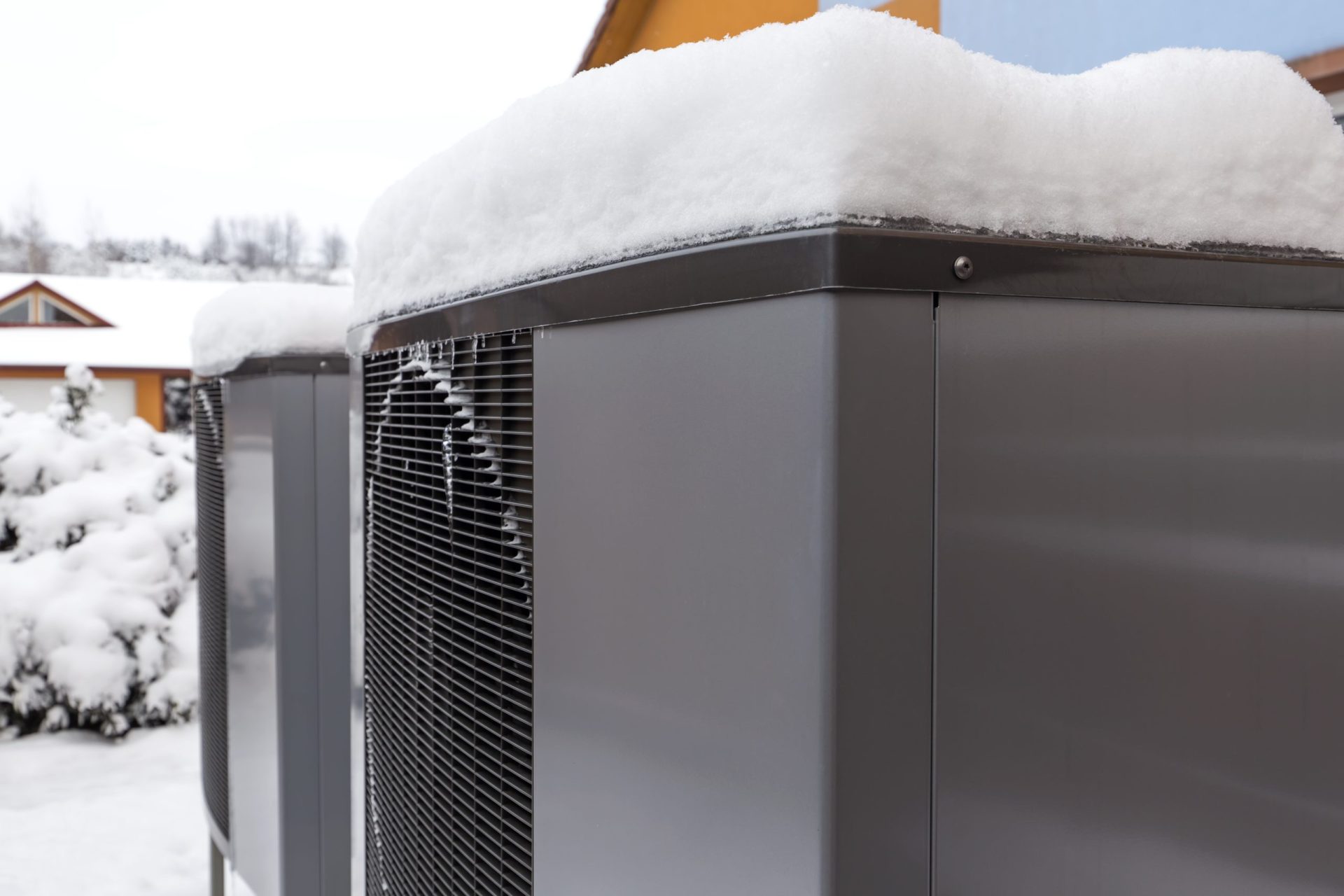Key Takeaways
Heat pump defrost cycle insights:
- Melts Coil Frost: Reverses to cooling mode to melt frost and restore heat flow.
- Sensor-Driven Activation: Newer models use sensors to detect frost and trigger defrost.
- Signs of Trouble: Frequent or prolonged cycles signal sensor issues or airflow blockages.
- Maintenance Matters: Clearing debris and regular checkups keep defrost mode efficient.
Check out our heat pump system services.
When winter hits the Sierra, your heat pump system provides more than just heat. It has to battle outdoor frost to keep your home warm. That’s where the heat pump defrost cycle comes in.
If you’ve ever noticed your unit switching modes unexpectedly or steam rising from the outdoor cabinet, you’ve seen the defrost cycle in action. This critical process helps your heat pump unit stay efficient even when cold air and outdoor air conditions make it difficult to extract heat and retain thermal energy in your HVAC system.
Why Your Heat Pump Goes Into Defrost Mode
The heat pump defrost mode activates when frost builds up on the outdoor coil of a heat pump. That ice insulates the coil and disrupts the heat transfer process, making it harder to extract heat from the air. When onboard sensors detect frost combined with outdoor temperature and humidity shifts, the heat pump switches into defrost mode by initiating a unit switch. This temporarily reverses the system into a cooling cycle, pumping hot refrigerant through the heat pump’s outdoor coil to melt the ice.
During the defrost process, the outdoor fan stops to keep heat trapped near the coil while the compressor continues to circulate refrigerant. You may see vapor as the frost evaporates. Inside, the system engages auxiliary heat to prevent cold air from circulating. Once the frost clears, the system switches back into the heating cycle, delivering steady, warm air throughout your home. This balancing act between temporary cooling and consistent heating defines the heat pump’s defrost mode, keeping your system stable even in freezing weather.
What Triggers the Heat Pump Defrost Cycle?
Not all systems operate the same. Older heat pumps often use fixed-timer defrosts, forcing the unit to go through a defrost cycle whether needed or not. Demand-defrost control in newer models uses sensors on the outdoor unit’s heat exchanger to measure coil surface temperature and frost buildup.
The heat pump defrost cycle usually activates under four main conditions: low outdoor temperature, high humidity, limited airflow from debris or snow accumulation, and poor sun exposure. These variables directly influence when a heat pump goes into defrost mode.
If your system defrosts too often, the time the heat pump stays in defrost increases—especially when the heat load is high. That causes your heat pump to work harder, burns more energy, and cuts into the heat pump’s efficiency. Sometimes, sensor errors may prevent the system from accurately switching to the defrost cycle, creating wasteful cycles.
How to Prevent Heat Pump Defrost Issues
Keep the outdoor unit’s heat exchanger clear to maximize your heat output and preserve your heating and cooling system. Snow, leaves, and ice can block airflow and reduce the efficiency of defrosting heat.
Redirect downspouts away from the unit to prevent ice buildup. Trim back shrubs to improve air circulation. Whether you use a dual-fuel setup or a single heat pump system, proper airflow ensures your heat pump will operate consistently, even in harsh weather.
Proper maintenance is a must. Have a technician inspect the unit, test the defrost sensors, and verify that your heat pump’s defrost cycle functions as intended. This includes evaluating the heat exchange efficiency and verifying the cycle’s proper entry and exit timing. If the defrost mode is stuck or lagging, the system may over-rely on emergency heat, which drives up energy costs and reduces performance.
When your unit tries to heat and stays in defrost too long or cycles too frequently, it may pull heat energy from backup resistance coils instead. Removing the heat can cause momentary indoor discomfort. Unlike a furnace and air conditioner, heat pumps don’t generate heat—they move it. In a geothermal system, this means drawing heat from the ground. In an air-source setup, it means pulling heat from the outside air, even when temperatures plummet.
Understanding your heat pump’s defrost cycle lets you catch performance issues before they disrupt comfort. Whether your system needs tuning or a full heat pump repair, we’ll keep your HVAC system ready to handle snow, ice, and everything winter brings.
When frost conditions demand it, your unit will defrost regularly and return to the heating cycle as it should. Heat pumps can provide dependable heat through the toughest cold spells, and many heat challenges are solved by knowing how your heat pump operates.

